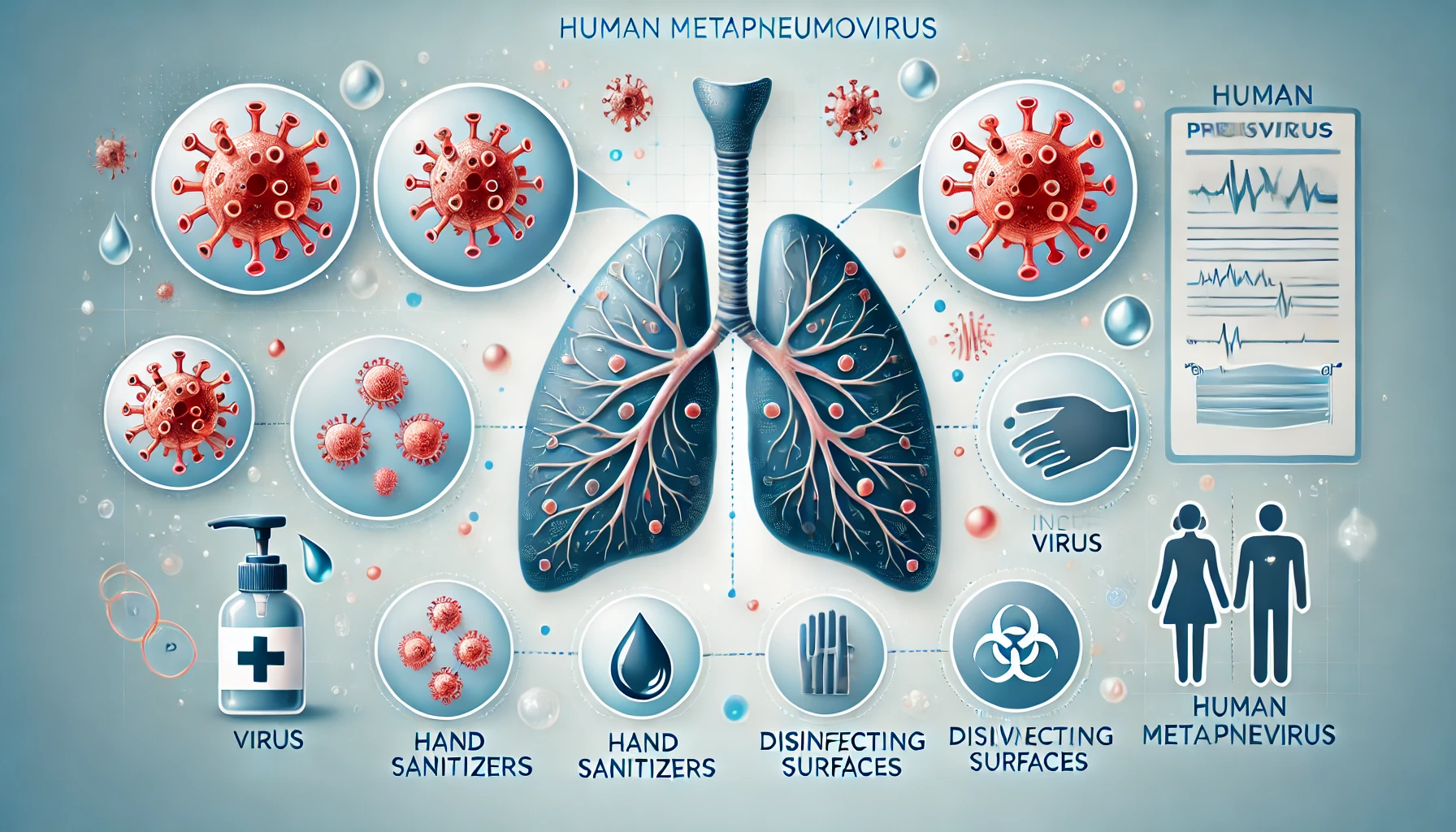Human Metapneumovirus (HMPV) is a respiratory virus that has recently gained attention due to its increasing cases worldwide. Known for its ability to affect individuals of all age groups, HMPV has raised concern due to its potential to cause significant respiratory illnesses, especially in vulnerable populations such as infants, the elderly, and individuals with compromised immune systems. Here’s a detailed overview of HMPV, including its symptoms, modes of transmission, and preventive measures.
What is HMPV?
Human Metapneumovirus (HMPV) belongs to the Paramyxoviridae family of viruses, a group that also includes the respiratory syncytial virus (RSV). HMPV was first identified in 2001 in the Netherlands and is now recognized as a significant cause of respiratory infections worldwide. Although it can affect people of all ages, the virus is particularly concerning for young children, elderly adults, and individuals with weakened immune systems.
HMPV is known to cause a wide range of respiratory illnesses, from mild cold-like symptoms to more severe conditions like pneumonia and bronchiolitis. While most cases are self-limiting and resolve with little medical intervention, the virus can lead to severe health complications in certain at-risk groups.
Symptoms of HMPV Infection
The symptoms of HMPV infections can vary significantly, ranging from mild to severe respiratory illnesses. Common symptoms include:
- Cold-like symptoms: These include coughing, sneezing, a runny nose, and a sore throat, which are typical of upper respiratory tract infections.
- Fever: A mild to moderate fever is common during HMPV infection.
- Shortness of breath: In more severe cases, particularly among vulnerable individuals, HMPV can cause serious respiratory conditions such as pneumonia or bronchiolitis. Shortness of breath may be a warning sign of these more serious complications.
Most individuals with HMPV infection experience mild illness and recover within a few days without requiring special medical care. However, people in high-risk groups—such as infants, older adults, and those with compromised immune systems—may face more severe symptoms and complications. In these cases, hospitalization may be necessary for respiratory support and other treatments.
Transmission of HMPV
HMPV spreads primarily through two main transmission routes:
- Respiratory droplets: When an infected person coughs, sneezes, or talks, tiny respiratory droplets containing the virus are expelled into the air. These droplets can then be inhaled by individuals nearby, leading to infection.
- Direct contact: The virus can also spread through direct contact with contaminated surfaces or objects. When a person touches these surfaces (e.g., doorknobs, countertops, or toys) and then touches their face, the virus can enter the body through the eyes, nose, or mouth.
HMPV is most active during the winter and early spring months, although it can circulate year-round in some regions. During colder months, the virus spreads more easily due to increased indoor activity and closer proximity to others, which facilitates the transmission of respiratory infections.
Who is at Risk?
While anyone can contract HMPV, certain populations are at a higher risk for developing severe illness:
- Infants and young children: Due to their still-developing immune systems, young children are particularly vulnerable to the respiratory effects of HMPV, especially those under the age of two.
- Older adults: As people age, their immune systems tend to weaken, making them more susceptible to infections, including HMPV. Older adults with chronic conditions such as heart disease, diabetes, or lung disease are at an even greater risk for complications.
- Individuals with compromised immune systems: People undergoing treatments that suppress their immune systems, such as chemotherapy, organ transplant recipients, or those with HIV/AIDS, are more likely to experience severe symptoms when infected with HMPV.
These groups are more likely to develop complications like pneumonia, bronchitis, or hospitalization due to difficulty breathing. Therefore, preventing the spread of HMPV in these populations is crucial for reducing the risk of severe health outcomes.
Prevention of HMPV Infection
While there is currently no specific vaccine or antiviral treatment available for HMPV, there are several preventive measures that can help reduce the risk of infection:
- Practice good hygiene: Regular handwashing with soap and water for at least 20 seconds is one of the most effective ways to prevent the spread of viruses like HMPV. If soap and water are not available, using hand sanitizers containing at least 60% alcohol can be a useful alternative.
- Avoid close contact with infected individuals: As HMPV spreads through respiratory droplets, it’s important to avoid close contact with people showing symptoms of the virus, such as coughing, sneezing, or a runny nose.
- Disinfect surfaces: Frequently touched surfaces, such as doorknobs, light switches, countertops, and phones, should be cleaned and disinfected regularly to reduce the risk of virus transmission.
- Cover your mouth and nose: When coughing or sneezing, it’s important to cover your mouth and nose with a tissue or your elbow to prevent respiratory droplets from becoming airborne and infecting others.
In addition to these general preventive measures, individuals in high-risk groups should take extra precautions during peak seasons for respiratory infections. This may include avoiding crowded places and ensuring that they are up to date on their vaccinations for other respiratory viruses, such as the flu, which can further reduce the risk of complications.
Conclusion
Human Metapneumovirus (HMPV) is a significant respiratory virus that can cause a range of symptoms, from mild cold-like signs to severe respiratory complications. While the virus is generally mild in healthy individuals, it poses a greater risk to vulnerable populations, including infants, older adults, and those with compromised immune systems.
Understanding the symptoms, transmission methods, and preventive measures for HMPV can help reduce the risk of infection, particularly during its peak seasons in winter and early spring. By practicing good hygiene, avoiding close contact with sick individuals, and disinfecting commonly touched surfaces, the spread of HMPV can be minimized, helping protect those most at risk of severe illness.
As research continues, better treatments and preventative measures may become available, but in the meantime, awareness and vigilance remain crucial in managing and reducing the spread of this respiratory virus.





